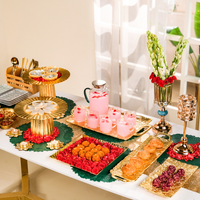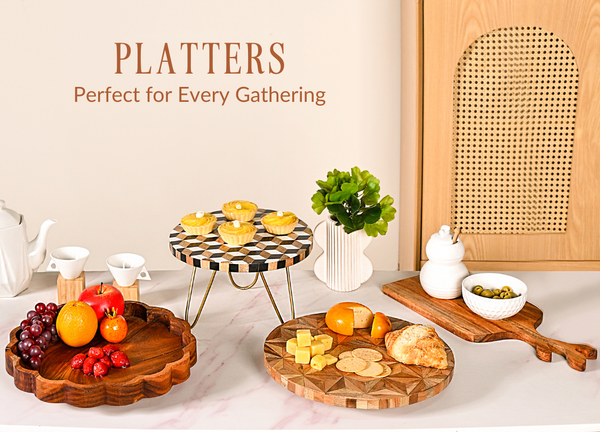Have you ever noticed and wondered why some of the famous American Food Outlets like Wendy’s, KFC and Pizza Hut have their logos and interiors coloured in red? Well, you’re in the right place then. This might just be the blog you’re looking for!
Colours are not simply used in the process of beautification. They talk through feelings and expressions of people such that colours have a great impact on the functioning of our brains.
To understand this, let's talk about colour theory first:
In simple language, colour theory is about getting the correct colour scheme and being able to interpret whether or not certain colours fit together. We have primary colours - red, green, yellow, and blue, from which all the other colours are derived.
Now, on the basis of its tone, colours are usually divided into:
-
Warm Colours: red, orange, yellow. These are bright colours, related to strong, exciting emotions.
-
Cool Colours: blue, green, purple. These are calm colours which make people feel calm, relaxed, and refreshed.
So, what’s the scientific relation behind a colour and our feeling a certain way?
Well, colours are nothing but light waves. So as soon as light interacts with our retina, it reaches the brain, which is encompassed by neurological senses. Subsequently, it follows a continuous procedure of sending signals from the nervous system to the brain and vice versa, thereby impacting the brain’s functioning. During this process, the brain interprets and releases hormones accordingly, which are pillars of our flowing emotions and sensations.
With the brain’s interpretation, the hypothalamus - a crucial region of the brain responsible for controlling emotions, hunger, and hormones - receives the signals and controls the internal functioning. Thus, once the brain interprets the colours, it proceeds to analyze emotions.
Given that, with different colours come different wavelengths of their impact on controlling one’s mood.
The colour red is warm and energetic, which is perfect for creating a dining environment. It has a very stimulating effect and can make you feel excited or hungry. Red can trigger an increase in appetite since it is linked to elevated heart rates and even mild physiological stimulation. According to psychological theories, red may subliminally indicate that food is appetizing and ready to be consumed because it is associated with warmth and passion. That’s why we see red colour in outlets like KFC and Pizza Hut - to make us eat more!!
Orange is quite similar to red. Its playful hue and strong aura set the mood to increase your appetite.
Yellow, the colour of sunshine, makes people feel more energetic and happy. These pleasant feelings may contribute to a natural eating atmosphere, which may entice patrons to overindulge. As much as it is a pleasant colour, too much yellow can cause anxiety. For this reason, designers frequently use it sparingly in dining areas to maintain a happy mood without overstimulating.
So if you want to increase your appetite and stay healthy at the same time, our Yellow Ochre Serving Bowl would be perfect for a lunch loaded with veggies.
Light colours like blue help you relax or feel sleepy, which is why it is the least appetising. If you're in a blue room, you might not feel like eating too much. In addition to that, not many foods are blue in colour and therefore, explains their contribution to the appetite-suppressing reputation. According to studies, the absence of blue in our diet may cause us to subconsciously associate the color with ruined or inedible food, which may reduce our appetite.
Green is the colour of our environment. It is related to calmness and well-being. This involuntarily makes us feel peaceful and mindful. Moreover, since most veggies are green, they are well-known to the brain's colour interpretation system. Therefore, it is a perfect symbolism of healthy eating and a balanced appetite.
Pink is soft and sweet. While it is not directly related to stimulating appetite, it is often associated with sweet foods and desserts. Instead of promoting hurried or emotional overeating, this may promote slow, mindful eating by fostering a peaceful, secure emotional state. Pink is frequently associated with sweets and desserts; consider frosted cupcakes, cotton candy, and strawberry ice cream.
 Pink can therefore increase the attraction of desserts or elicit appetites for sweets, particularly when used in packaging or plating. Pink, particularly pastel pinks, is a subdued kind of red that doesn't overstimulate. Although it won't typically increase appetite dramatically, it might make a space feel cozier or more emotionally supportive, which can nonetheless affect how much a person loves eating.
Pink can therefore increase the attraction of desserts or elicit appetites for sweets, particularly when used in packaging or plating. Pink, particularly pastel pinks, is a subdued kind of red that doesn't overstimulate. Although it won't typically increase appetite dramatically, it might make a space feel cozier or more emotionally supportive, which can nonetheless affect how much a person loves eating.
Ways to control appetite:
-
Eat mindfully
-
Using soft coloured utensils such as the Lilac Scalloped 22 Piece Dinner Set For 6
-
Drink water before meals. Check out our water bottle collection in various soothing colours and patterns.
-
Do not skip breakfast because it stabilizes appetite hormones.
On the other hand, humans are big on nostalgia and tend to associate things with certain memories. This association contributes to the flow of appetite. For instance, red might remind someone of their loved ones, or about a sunny day spent with their family and on seeing things in yellow, it might leave them feeling better, warmer! Whereas on seeing blue, people might recall lazy winter days snuck in their cosy throw blankets to avoid the damp weather, which ultimately results in loss of appetite. As for the visuals, food with vibrant colours can be more appealing than food with drab or mismatched colours, affecting how much we eat. This colour psychology is used in kitchen and restaurant design to improve the dining experience. Everything from the overall contentment with a meal to the perceived flavor of the food can be impacted by the thoughtful use of lighting and color.
That’s how colours affect our appetite. So be mindful of the surroundings you eat in next time for a balanced appetite!






















